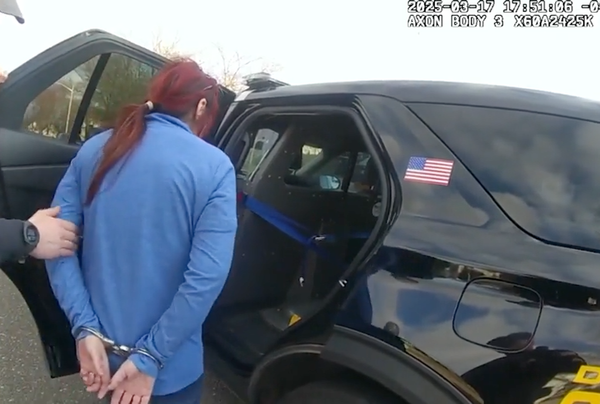
The market in Nuseirat was busy on Saturday morning. Among the crowds were Asia El-Nemer, looking for a pharmacy that still had stock of her sister’s medication, and Ansam Haroun, hoping to find new clothes to lift her daughters’ spirits on the forthcoming Eid al-Adha holiday.
This part of central Gaza had emptied at the start of the year when Israeli troops first moved through, destroying Haroun’s house in an airstrike, but filled up again from May as more than a million people fled north to escape another operation in Rafah.
“The Nuseirat market is always crowded, but now more than usual because of the many displaced people,” said Haroun, 29, who is now staying with an uncle. She was looking at outfits for the girls when the first Israeli airstrikes hit, and almost without thinking raced out of the door to go to them.
Outside, she found a scene “like the horrors of judgment day”, as panicked crowds tried to escape the coming onslaught. Helicopters and quadcopter drones would soon join the assault that left hundreds dead, and shattered bodies scattered along the streets, images from the area show.
“Everyone was screaming, terrified,” she said. “The street I was on was only 50 metres long, but it was packed with hundreds of people, all running. A woman next to me fainted from terror, and I saw vendors abandoning their goods on the roadside to flee.”
El-Nemer, a 37-year-old software engineer originally from northern Gaza, was among the crush of people trying to escape.
“I was jogging along the street with other women. We were terrified,” she said. They ran past health clinics and schools where they might once have sought shelter, but now shunned because of Israeli attacks on both types of compound.
But when a helicopter appeared ahead and started shooting people in the street, and a quadcopter joined the attack, the crowd became hysterical and she took cover in a nearby house, dragging in another woman who was having a panic attack.
They would not discover for hours that the intense attack was launched to support Israeli special forces on a mission to free four hostages held in apartments near the market. Gaza’s health ministry said more than 270 Palestinians were killed and more than 600 injured in the assault.
Special forces soldiers arrived in central Nuseirat in a truck piled with furniture, disguised as Palestinians displaced from Rafah, Israel’s Ynet online news channel reported, citing Saudi media.
Raed Tawfiq Abu Youssef, who was keeping vigil at hospital over a son critically injured in the attack, said his cousin watched the Israeli team arrive in the truck and a car. “Some men got out of the truck, greeted people in front of the house, went in and started killing everyone,” he said.
The bombing began soon after. The Israeli military said its forces came under attack during a complex operation, and “under 100 people were killed”; a spokesperson said he did not know how many were civilians.
Most of the dead and victims were taken to the nearby Aqsa hospital, where Ali Ibrahim Tawil, 31, was on cardiology wards before the war, but now mostly serves as an emergency doctor trying to treat an endless stream of war-wounded with dwindling resources.
Even by those standards, the scenes on Saturday were catastrophic. “It was a terribly difficult sight,” he said. “The injured we received were of all ages: children, women, men, elderly people, and there were all kinds of wounds.
“Many were on the floor, beds were put in the courtyard, in a big tent outdoors, literally every place in the hospital was filled with the injured, the dead or their relatives. The emergency room was so full, you couldn’t squeeze through your body from the sheer volume of people.”
The hours of bombardment were ordered at least in part to shield the hostages and Israeli forces, and the attacks intensified after a rescue vehicle carrying the three male hostages was trapped under heavy fire, Israeli media reported.
The air force and navy vessels offshore provided cover as hundreds of Israeli troops went into the camp on foot and in armoured vehicles and tanks, the Ynet online outlet reported.
“The reinforcements and air force managed to isolate the central battle scene, thus providing a safe escape route for the [rescue] force with the three hostages,” the report said. They were taken west to a beach near a new US pier built for deliveries of aid into Gaza, and flown from there by helicopter to Israel.
The devastating attacks that cleared the hostages’ path to freedom could be traced at least in part through the stories of those seeking treatment in al-Aqsa.
Ghazal al-Ghussein, 16, had been sitting with her family in a camp of iron-roofed refugee shacks in al-Hasayneh, west of Nuseirat and about half a mile inland, when the bombing began.
A missile landed beside them, killing one brother and injuring her father, mother and other brother, said her aunt Iman Abu Ras, who had brought her to hospital. Ghussein was hit in the head by shrapnel that caused bleeding on the brain and paralysed her hand and foot.
“No one helped them. Her injured father dragged her, her mother and her injured brother on a mattress away from danger, but then he collapsed unconscious,” Abu Ras said. “The area was besieged, and the ambulance was only able to come to evacuate them after a long time.”
Abu Youssef, 42, said even living beside the hospital had not protected his family from an airstrike that hit directly next to their home. He had lost his three other children earlier in the war, and doctors said his last son had little chance of survival.
“Everyone in my family and my brothers’ families was either killed or injured. Three of my nieces died so far; my sister is still fighting for her life,” he said.
“My house is near al-Awda hospital,” he said. “Although it is hundreds of metres away from the building they targeted, there were a lot of airstrikes and all kinds of attacks in the area to cover up their cowardly operation.”
Additional reporting by Matan Cohen







